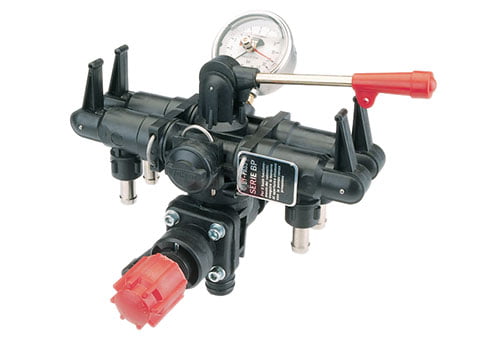How Control Valves Effect Power Performance in Industrial Settings
Wiki Article

Maximize Energy Savings and Convenience With Advanced Building Automation Controls
In the world of contemporary style and center management, the combination of advanced structure automation controls stands as a pivotal innovation. By utilizing the power of automation, structures can adapt, react, and develop in ways that were as soon as unimaginable.Power Performance Advantages
Energy effectiveness benefits can dramatically decrease energy usage and functional costs in buildings. By executing energy-efficient techniques and modern technologies, building owners and operators can attain substantial cost savings while also adding to ecological sustainability. Among the main benefits of improving power efficiency in buildings is the reduction of utility bills. Energy-efficient systems, such as innovative building automation controls, can optimize using resources like cooling, lighting, and heating, causing reduced energy expenditures gradually.Furthermore, improved energy efficiency can extend the life-span of structure equipment and systems. By running much more successfully, HVAC systems, light, and various other structure parts experience much less deterioration, leading to decreased upkeep and replacement costs. Additionally, energy-efficient structures typically command greater residential property values and rental rates, giving lasting economic benefits to owners.
Additionally, energy performance can enhance owner comfort and efficiency. Correctly controlled indoor settings with optimum lighting and thermal problems develop a more helpful and pleasurable work area, bring about enhanced worker fulfillment and efficiency. Generally, the energy efficiency benefits related to advanced building automation controls are diverse, incorporating expense financial savings, ecological stewardship, and owner health.
Boosted Convenience Control
Enhancing comfort control in structure settings needs an advanced assimilation of sophisticated automation systems for ideal resident wellness. By making use of advanced building automation controls, facilities can customize the interior environment to fulfill the details needs and preferences of occupants. control valves.By incorporating these sophisticated controls, buildings can not only improve convenience however additionally boost power effectiveness by maximizing system procedures based on actual occupancy and usage patterns. Ultimately, prioritizing owner comfort through sophisticated automation systems leads to an extra satisfying and healthier indoor environment.
Functional Efficiency Improvements

Additionally, the execution of real-time surveillance and analytics tools makes it possible for building drivers to recognize energy inadequacies and operational anomalies promptly. By continuously keeping track of energy use patterns and system performance metrics, changes can be made in real-time to enhance energy usage and make certain peak operational effectiveness. control valves. Furthermore, incorporating need feedback techniques into structure automation controls can even more improve functional effectiveness by dynamically changing power usage based on grid problems and prices signals
Indoor Climate Optimization
Effective indoor environment optimization is a basic facet of building automation controls, ensuring residents' convenience and browse around here well-being while maximizing energy cost savings. By making use of advanced sensors and controls, constructing automation systems can constantly check and adjust temperature level, humidity degrees, air quality, and air flow to produce an optimum indoor atmosphere. Maintaining constant and comfortable conditions not just improves occupant complete satisfaction but also enhances performance and total health.Interior environment optimization likewise plays an essential role in energy efficiency. By fine-tuning home heating, air flow, and cooling systems based upon real-time information and occupancy patterns, developing automation controls can substantially minimize energy usage - control valves. Carrying out techniques such as demand-controlled air flow and thermal zoning can assist minimize power waste while straight from the source guaranteeing that each area of the structure receives the essential conditioning.

Sustainable Atmosphere Development
Structure automation manages not only optimize interior climate problems for energy performance and passenger comfort yet also lay the structure for creating a lasting atmosphere through critical administration of systems and resources. By incorporating innovative building automation technologies, such as sensors, actuators, and smart software application, centers can check and change power usage in real-time to decrease waste and reduce their carbon impact. These systems make it possible for anticipating upkeep, determining possible issues prior to they escalate and enhancing equipment performance to enhance long life and performance.Furthermore, sustainable atmosphere production expands beyond energy administration to incorporate water preservation, waste decrease, and indoor air high quality renovation. Structure automation controls can control company website water usage, discover leakages, and make certain appropriate garbage disposal techniques, adding to total sustainability initiatives. In addition, by keeping track of and managing air flow and purification systems, these technologies enhance resident health and wellness and efficiency while lowering power intake related to HVAC operations.
Conclusion
In conclusion, advanced structure automation regulates deal substantial advantages in regards to energy cost savings, comfort control, functional effectiveness, interior environment optimization, and developing a lasting environment. By executing these controls, buildings can attain ideal efficiency while reducing power intake and enhancing passenger convenience. It appears that making use of advanced automation modern technology is critical in boosting building performance and developing a much more sustainable future.Power performance benefits can substantially reduce power usage and operational prices in buildings. In general, the energy performance benefits linked with sophisticated building automation controls are diverse, incorporating cost savings, environmental stewardship, and occupant well-being.
In addition, including demand reaction approaches into building automation controls can further enhance operational effectiveness by dynamically changing energy usage based on grid conditions and pricing signals.
Building automation controls not only optimize interior environment problems for power performance and owner convenience however likewise lay the foundation for producing a lasting atmosphere with tactical management of resources and systems.In conclusion, progressed structure automation regulates deal considerable benefits in terms of energy savings, comfort control, functional efficiency, indoor climate optimization, and producing a sustainable environment.
Report this wiki page